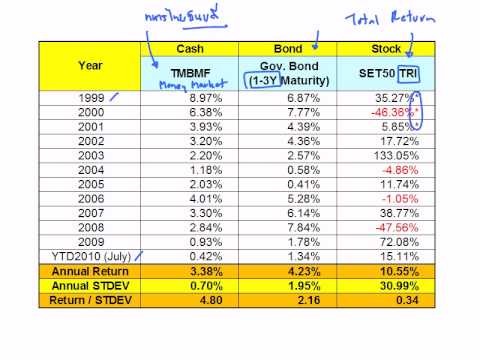Beta Know The Risk
Post on: 16 Апрель, 2015 No Comment

Read about six gold medal stocks set to climb here .
Read about why Netflix has a bumpy, crowded road ahead here .
Learn about three big reasons why Marissa Mayer’s hiring is a huge win for Yahoo! here .
Read about developing revenue: how to succeed in a recession here .
Read about three ways to attract top talent on a budget here .
by Ben McClure
How should investors assess risk in the stocks they buy or sell? As you can imagine, the concept of risk is hard to pin down and factor into stock analysis and valuation. Is there a rating — some sort of number, letter or phrase — that will do the trick?
One of the most popular indicators of risk is a statistical measure called beta. Stock analysts use this measure all the time to get a sense of stocks’ risk profiles.
Here we shed some light on what the measure means for investors. While beta does say something about price risk, it has its limits for investors looking for fundamental risk factors.
Beta is a measure of a stock’s volatility in relation to the market. By definition, the market has a beta of 1.0, and individual stocks are ranked according to how much they deviate from the market. A stock that swings more than the market over time has a beta above 1.0. If a stock moves less than the market, the stock’s beta is less than 1.0. High-beta stocks are supposed to be riskier but provide a potential for higher returns; low-beta stocks pose less risk but also lower returns.
Beta is a key component for the capital asset pricing model (CAPM), which is used to calculate cost of equity. Recall that the cost of capital represents the discount rate used to arrive at the present value of a company’s future cash flows. All things being equal, the higher a company’s beta is, the higher its cost of capital discount rate. The higher the discount rate, the lower the present value placed on the company’s future cash flows. In short, beta can impact a company’s share valuation.
Advantages of Beta
To followers of CAPM, beta is a useful measure. A stock’s price variability is important to consider when assessing risk. Indeed, if you think about risk as the possibility of a stock losing its value, beta has appeal as a proxy for risk.
Intuitively, it makes plenty of sense. Think of an early-stage technology stock with a price that bounces up and down more than the market. It’s hard not to think that stock will be riskier than, say, a safe-haven utility industry stock with a low beta.
Besides, beta offers a clear, quantifiable measure, which makes it easy to work with. Sure, there are variations on beta depending on things such as the market index used and the time period measured, but broadly speaking, the notion of beta is fairly straightforward to understand. It’s a convenient measure that can be used to calculate the costs of equity used in a valuation method that discounts cash flows.
Disadvantages of Beta
However, if you are investing in a stock’s fundamentals, beta has plenty of shortcomings.

For starters, beta doesn’t incorporate new information. Consider a utility company, let’s call it Company X. Company X has been considered a defensive stock with a low beta. When it entered the merchant energy business and assumed high debt levels, X’s historic beta no longer captured the substantial risks the company took on. At the same time, many technology stocks are relatively new to the market and thus have insufficient price history to establish a reliable beta.
Another troubling factor is that past price movements are very poor predictors of the future. Betas are merely rear-view mirrors, reflecting very little of what lies ahead.
Furthermore, the beta measure on a single stock tends to flip around over time, which makes it unreliable. Granted, for traders looking to buy and sell stocks within short time periods, beta is a fairly good risk metric. However, for investors with long-term horizons, it’s less useful.
Re-Assessing Risk
The well-worn definition of risk is the possibility of suffering a loss. Of course, when investors consider risk, they are thinking about the chance that the stock they buy will decrease in value. The trouble is that beta, as a proxy for risk, doesn’t distinguish between upside and downside price movements. For most investors, downside movements are risk while upside ones mean opportunity. Beta doesn’t help investors tell the difference. For most investors, that doesn’t make much sense.
There is an interesting quote from Warren Buffett in regards to the academic community and its attitude towards value investing: Well, it may be all right in practice, but it will never work in theory. Value investors scorn the idea of beta because it implies that a stock that has fallen sharply in value is more risky than it was before it fell. A value investor would argue that a company represents a lower-risk investment after it falls in value — investors can get the same stock at a lower price despite the rise in the stock’s beta following its decline. Beta says nothing about the price paid for the stock in relation to its future cash flows.
If you are a fundamental investor, consider some practical recommendations offered by Benjamin Graham and his modern adherents. Try to spot well-run companies with a margin of safety — that is, an ability to withstand unpleasant surprises. Some elements of safety come from the balance sheet, like having a low ratio of debt to total capital. Some come from consistency of growth, in earnings or dividends. An important one comes from not overpaying. Stocks trading at low multiples of their earnings are safer than stocks at high multiples.
The Bottom Line
It’s important for investors to make the distinction between short-term risk — where beta and price volatility are useful — and longer-term, fundamental risk, where big-picture risk factors are more telling. High betas may mean price volatility over the near term, but they don’t always rule out long-term opportunities.
The following article is from one of our external contributors. It does not represent the opinion of Benzinga and has not been edited.














